
Polysiphonia is a genus of filamentous red algae with about 19 species on the coasts of the British Isles and about 200 species worldwide, including Crete in Greece, Antarctica and Greenland. Its members are known by a number of common names. It is in the order Ceramiales and family Rhodomelaceae.
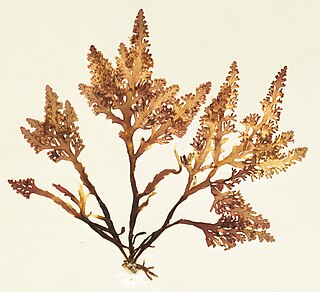
Osmundea pinnatifida is a species of red alga known by the common name pepper dulse.
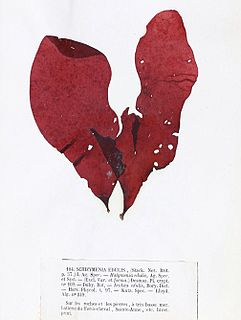
Dilsea carnosa, commonly known as the poor man's weather glass or the sea belt, is a species of red algae in the Dumontiaceae family of the order Gigartinales.
Polysiphonia denudata is a small red alga, Rhodophyta, growing as tufts up to 20 cm long without a main branch axis.
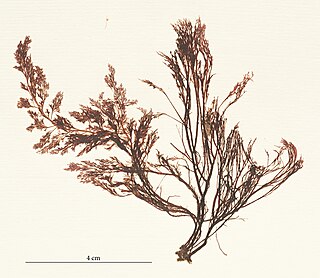
Polysiphonia elongata is a small red marine algae in the Rhodophyta.
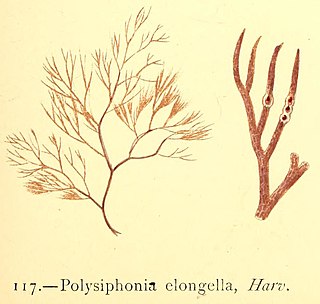
Polysiphonia elongella Harvey in W.J. Hooker is a branched species of marine red algae in the genus in the Polysiphonia in the Rhodophyta.
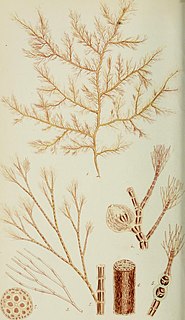
Polysiphonia fibrillosa (Dillwyn) Sprengel is a species of marine red alga in the Rhodophyta.

Polysiphoides fucoides (Hudson) Greville is a common marine alga in the Division Rhodophyta.

Melanothamnus harveyi, Harvey's siphon weed, is a small marine red alga in the division of Rhodophyta.

Ceramium ciliatum is a small marine red alga in the Division Rhodophyta.
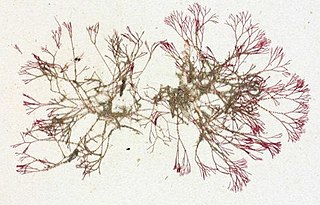
Ceramium cimbricum is a small red alga in the division Rhodophyta.
Brongniartella byssoides Schmitz is a small red marine alga.

Halidrys siliquosa is a large marine brown algae.

Phycodrys rubens is a red marine alga of up to 30 cm long.
Phyllophora pseudoceranoides, the stalked leaf bearer, is a small marine red alga.
Phyllophora sicula, the hand leaf bearer, is a small red marine alga.
Phyllophora traillii is a small marine red alga.
Osmundea hybrida is a fairly small marine red alga.

Polyides rotunda is a species of small red marine alga in the family Polyidaceae.
Chylocladia verticillata is a medium-sized red marine alga.












